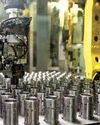
Has India been burger-deprived? Like cricket, is the burger that was born elsewhere finding its raison d'être here? What has made Indians queue up for openings of commonplace Burger Kings and Wendy’s? Indeed, what is so special about chewy buns with super-slim reheated frozen patties sandwiched in between? Well, going by recent trends, where the opening of one burger-centric eatery after another is drawing crowds like there is no tomorrow, this very West-born product is here to not just stay, but take a considerable bite of the Indian eating out market.
The burger also comes with the promise of achieving that elusive combination delivering a tasty (even soulful), veggie-friendly and occasionally, even an affordable snack. Has the burger become the new samosa - at once mass but also capable of being served bespoke? Taking over from not-so-distant cousins pav bhaji and bun omelette varieties — that are established Indian street food groups in themselves — looks like a medium-term if not near-term possibility.
A quick look around provides a sense of the change happening at a mall near you. Globally, the tendency may be to move away from ‘junk’ food; in India, just the reverse is happening. For India’s vast hinterlands coming into their first disposable incomes and seeking to aspire for more than the street-side samosa, the burger is often the first option.
For all the health food movements around, the QSR format is king at the moment, at least in India. And that’s where the chains are looking to cash in as the Indian food market grows at an estimated 15 to 20 per cent annually. Exact figures are impossible, though market research firm Crisil forecasts that the fast food market in India will touch Rs 7,000 crore by 2016.
This story is from the {{IssueName}} edition of {{MagazineName}}.
Start your 7-day Magzter GOLD free trial to access thousands of curated premium stories, and 9,000+ magazines and newspapers.
Already a subscriber ? Sign In
This story is from the {{IssueName}} edition of {{MagazineName}}.
Start your 7-day Magzter GOLD free trial to access thousands of curated premium stories, and 9,000+ magazines and newspapers.
Already a subscriber? Sign In

MEMORIES & IMPRESSIONS
Ratan Tata was an exceptional human being. He was a visionary leader, esteemed industrialist, and a humanitarian, who left an indelible mark on India and the world.

The Robotaxi Market
The robotaxi market is shaping up to be a high-stakes battleground as tech giants and automakers race to transform urban mobility.

And the Nobel Prize Goes to AI
The recent Nobel Prize T awards to AI pioneers affiliated with Google have sparked a broader conversation about Big Tech's influence on research and the limitations of traditional prize categories.

Ola Electrified
Once considered a trailblazer in India’s electric vehicle (EV) ecosystem, Bhavish Aggarwal’s Ola Electric now faces a major accountability crisis.

Sharp Slide in Industrial Output on Eve of Deepavali
India’s index of industrial production (IIP) saw a sharp reversal in August, contracting by 0.1 per cent, in stark contrast to the 4.7 per cent growth in July, mostly because of significant contractions in mining and electricity generation.

Heralding the Solar Era with Sustainable Electrification
RAJEEV KASHYAP on the economics of solar power, the hurdles in scaling it, and much more

A WELL-GREASED MACHINE
The OmniBook X14 laptop runs on first-generation Snapdragon X Elite, which bets big on Al-enabled productivity and battery life, but falls short when it comes to overall experience, says Deep Majumdar

DO NOT LETA HEALTH CRISIS RUIN YOUR FINANCIAL HEALTH
For a family of four living in a metro, it is recommended to opt for a family floater health insurance plan with a sum insured of at least Rs 15-20 lakh

Disruption Ahead: Beyond Organisation Charts and Structures
ALBERT EINSTEIN FAMOUSLY said, “We cannot solve our problems with the same thinking we used when we created them.

Dr. Rahul Shivajirao Kadam: A Visionary Leader Blending Sustainability, Innovation, And Social Empowerment
We are on the stage of global warming, and these technologies not only help prevent further damage but also leave behind a better environment for future generations.